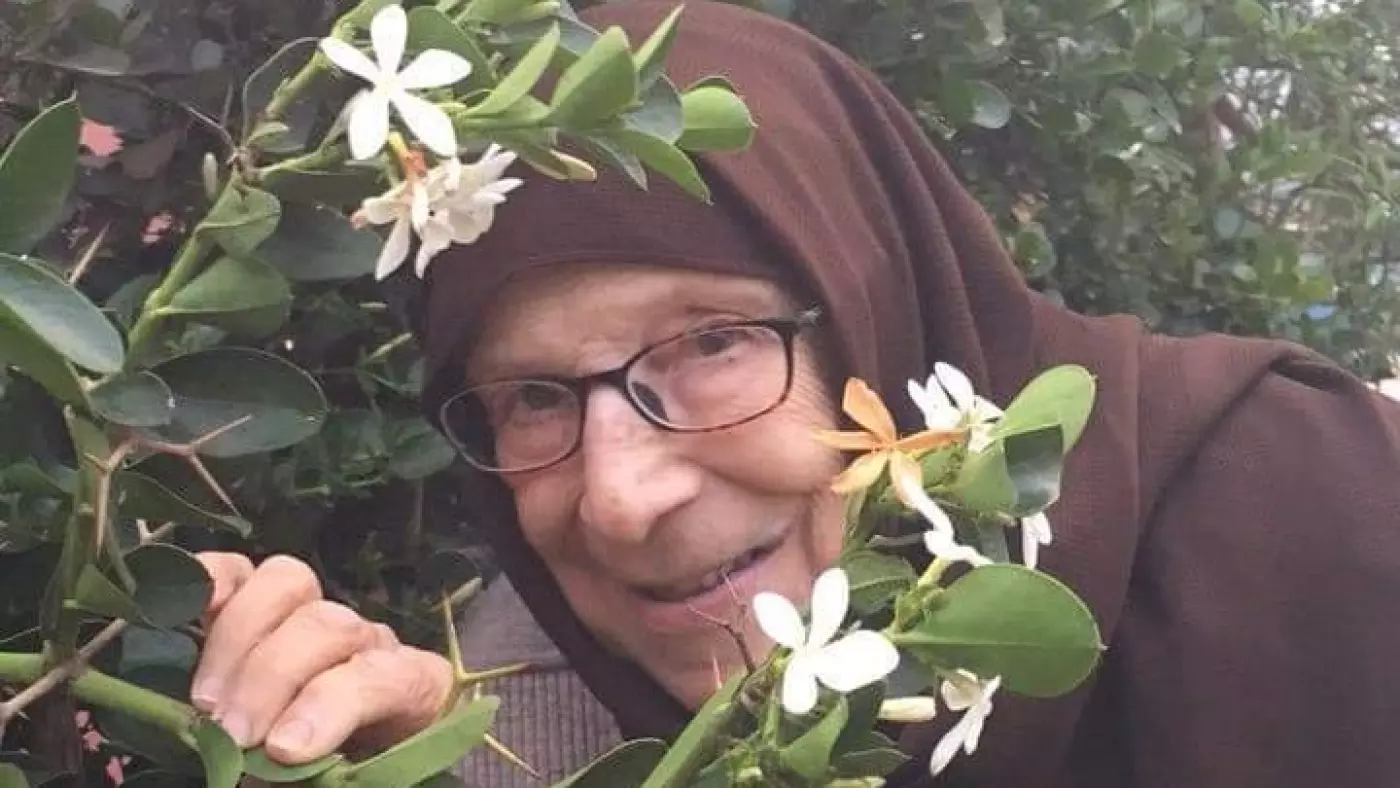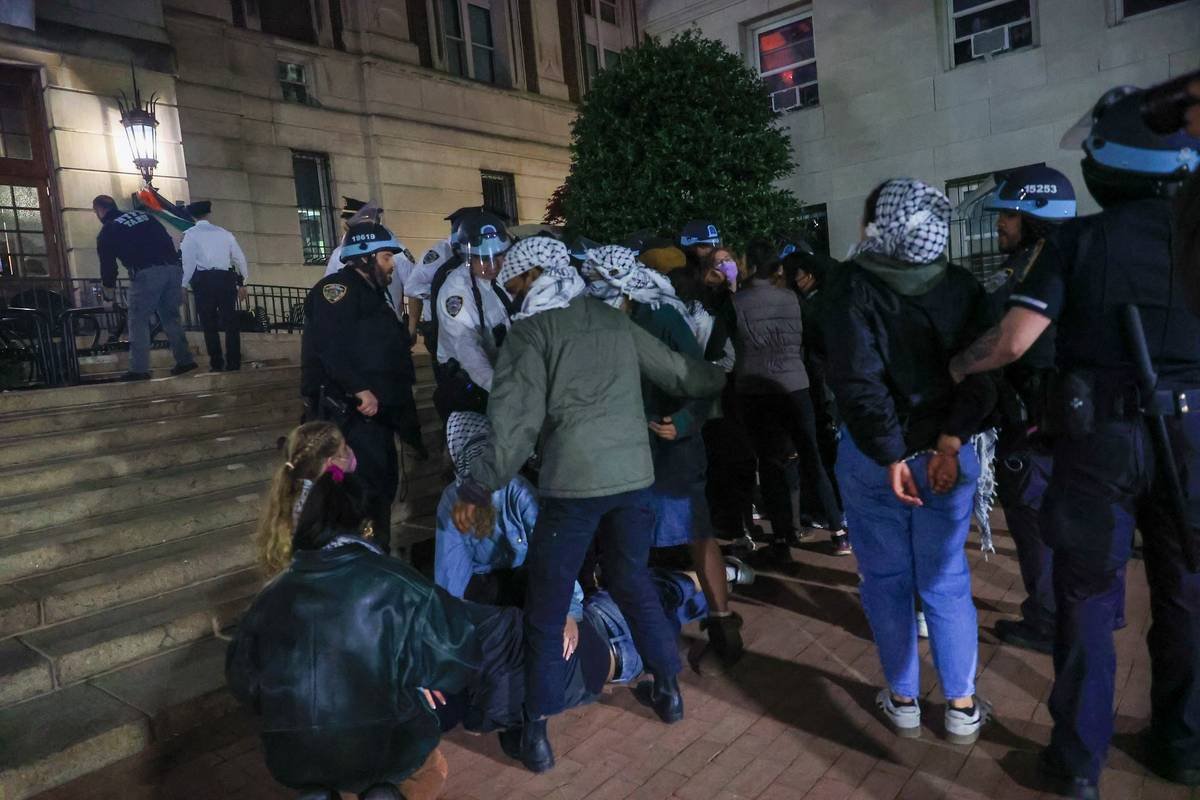
Dozens arrested at Columbia University as New York police disperse Gaza protest
Diana Ramirez-Simon, Jonathan Yerushalmy, Edward Helmore and Erum Salam
Dozens of students have been arrested after hundreds of New York City police officers entered Columbia University on Tuesday night to clear out an academic building that had been taken over as part of a pro-Palestinian protest.
Live video images showed police in riot gear marching on the campus in upper Manhattan, the focal point of nationwide student protests opposing Israel’s war in Gaza. Police used an armoured vehicle with a bridging mechanism to gain entry to the second floor of the building.
Officers said they used flash-bangs to disperse the crowd, but denied using teargas as part of the operation.
Before long, officers were seen leading protesters handcuffed with zip ties to a line of police buses waiting outside campus gates. NYPD spokesman Carlos Nieves said he had no immediate reports of any injuries following the arrests.
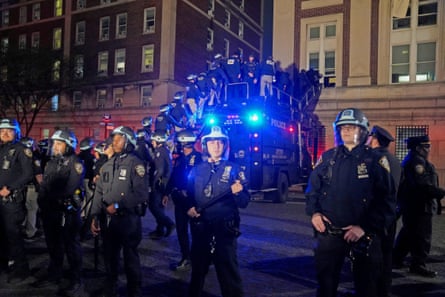
“We’re clearing it out,” police yelled as they marched up to the barricaded entrance to the building.
“Shame! Shame!” jeered many onlooking students still outside on campus.One protester at Columbia, who only gave their name as Sophie, told the Guardian that police had barricaded protesters inside buildings before making arrests. “It will not be forgotten,” she said. “This is no longer an Israel-Palestine issue. It’s a human rights and free speech and a Columbia student issue.”
The police operation, which was largely over within a couple of hours, follow nearly two weeks of tensions, with pro-Palestinian protesters at the university ignoring an ultimatum on Monday to abandon their encampment or risk suspension. On Tuesday, Columbia University officials threatened academic expulsion of the students who had seized Hamilton Hall, an eight-story neo-classical building blocked by protesters who linked arms to form a barricade and chanted pro-Palestinian slogans.
The university said in a statement on Tuesday it had asked police to enter the campus to “restore safety and order to our community”.
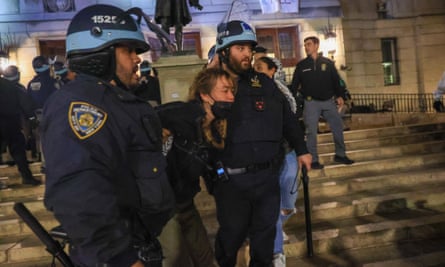
It said: “After the university learned overnight that Hamilton Hall had been occupied, vandalized, and blockaded, we were left with no choice. Columbia public safety personnel were forced out of the building, and a member of our facilities team was threatened. We will not risk the safety of our community or the potential for further escalation.”
The university reiterated the view that the group who “broke into and occupied the building” was being led by individuals who are “not affiliated with the university”.
It added: “The decision to reach out to the NYPD was in response to the actions of the protesters, not the cause they are championing.”
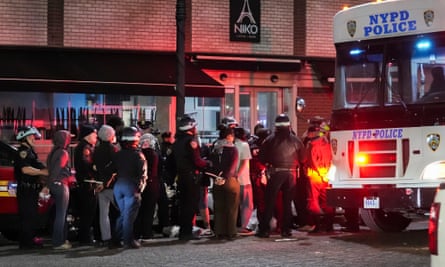
Photograph: Stephani Spindel/EPA
New York congressman Jamaal Bowman said he was “outraged” by the level of police presence at Columbia and other New York universities. He said on X: “The militarization of college campuses, extensive police presence, and arrest of hundreds of students are in direct opposition to the role of education as a cornerstone of our democracy.”
Bowman has called on the Columbia administration to stop the “dangerous escalation before it leads to further harm” and allow faculty back on to campus.
At a Tuesday evening news briefing, Mayor Eric Adams and city police officials said the Hamilton Hall takeover was instigated by “outside agitators” who lack any affiliation with Columbia and are known to law enforcement for provoking lawlessness.
Adams suggested some of the student protesters were not fully aware of “external actors” in their midst.
“We cannot and will not allow what should be a peaceful gathering to turn into a violent spectacle that serves no purpose. We cannot wait until this situation becomes even more serious. This must end now,” the mayor said.
Neither Adams nor the university provided specific evidence to back up that contention.
One of the student leaders of the protest, Mahmoud Khalil, a Palestinian scholar attending Columbia’s school of international and public affairs on a student visa, disputed assertions that outsiders had initiated the occupation. “They’re students,” he told Reuters.
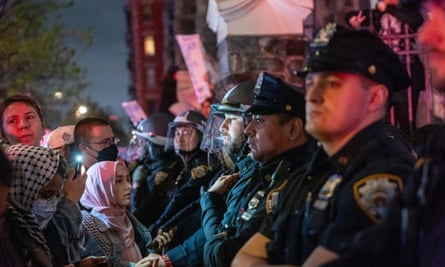
Hamilton Hall was one of several buildings occupied during a 1968 civil rights and anti-Vietnam war protest on the campus. This week, student protesters, displayed a large banner that reads “Hind’s Hall”, renaming it in honor of Hind Rajab, a six-year-old Palestinian girl from Gaza City who was killed by Israeli forces earlier this year.
Columbia journalism professor Seyma Beyram, said on X that she and her journalism school colleagues were trapped on one block surrounded by police barricades. “All I can document right now are students getting put on one of the buses.”
On Tuesday night, Columbia’s student radio station reported that Jelani Cobb, the dean of the journalism school, was threatened with arrest if he and others in the building came out. “Free, free, free Palestine,” chanted protesters outside the building. Others yelled: “Let the students go.”
At CUNY as the police moved off, one student said: “We de-escalated , and now the police are leaving. We’re proud of standing up for something. All we’re saying is were not happy university tuition fees are being used to fund wars, and we want to see what we can do about it, but without violence.”
(Source: The Guardian)
Reuters contributed to this report

